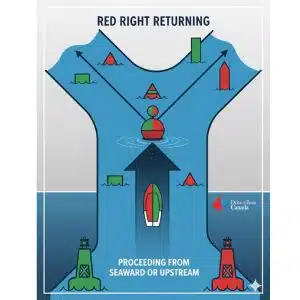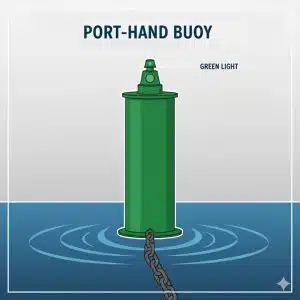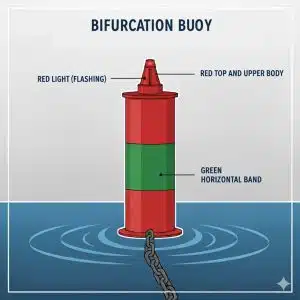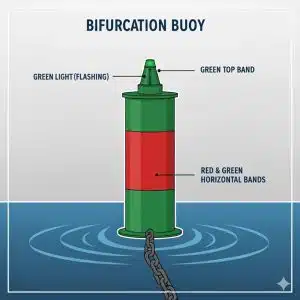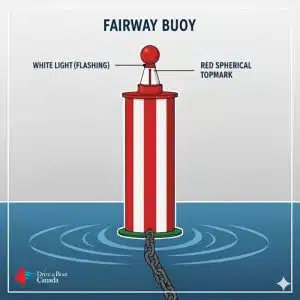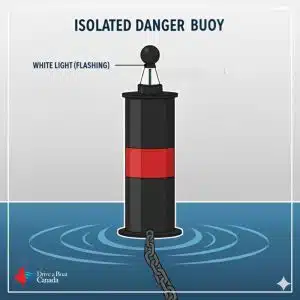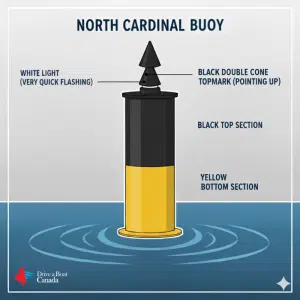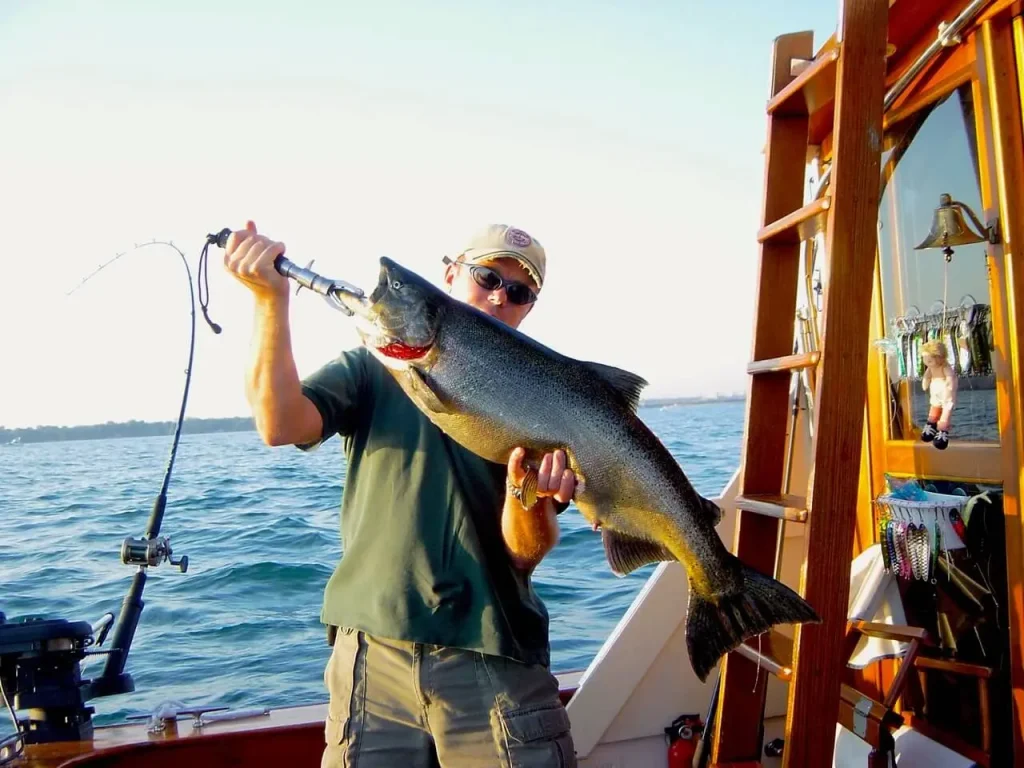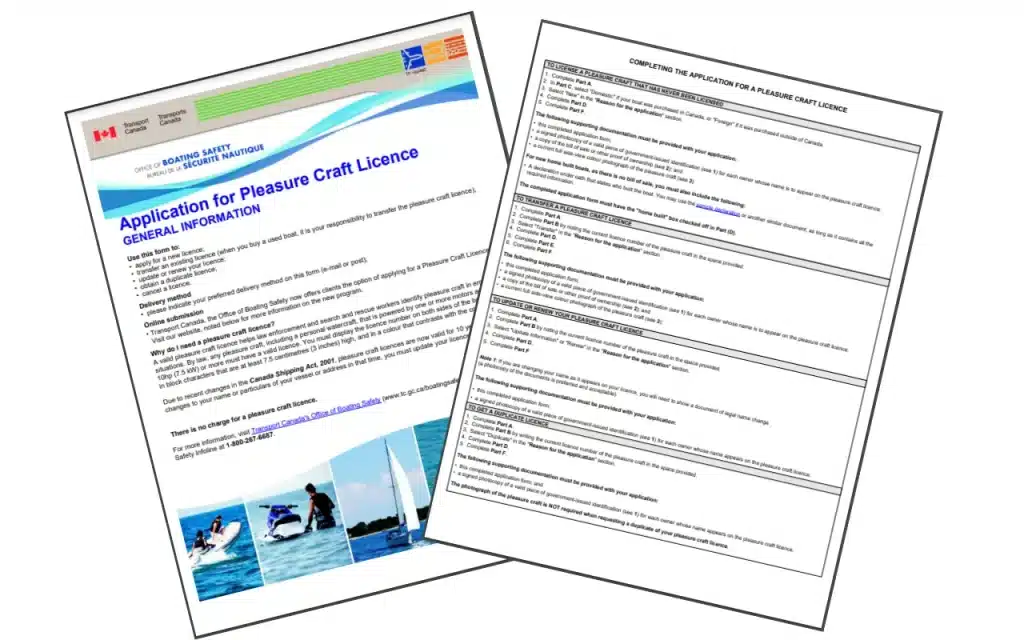Home / Boating Safety Manual / Buoys and Markers Used in Canada: Types, Colours and Meanings
10% OFF WITH CODE:
BLACKFRIDAY10
Buoys are floating devices that are used to guide boat operators on the water and provide them with important information.
There are many different types of boating buoys, and each has its own specific meaning. It’s important for boat operators to be able to identify and understand buoys and markers to navigate Canadian waters safely.
Key takeaways
- Canada follows the IALA Region B system for its Aids to Navigation.
- Buoys that boaters will encounter on Canadian waterways include lateral buoys (port, starboard, bifurcation and fairway); isolated danger buoys; cardinal buoys, and special purpose buoys (anchorage, mooring, cautionary, hazard, keep-out, control, information, diving and swimming).
- Different types of buoys can be identified by their colour and sometimes their shape.
Table of contents
- Lateral buoys
- Isolated danger buoys
- Cardinal buoys
- Special purpose buoys
- Frequently Asked Questions
Lateral buoys
Lateral buoys are used to mark which side of a channel boat operators should use when going upstream in order to avoid collisions and hazards.
Port hand buoys
Port hand buoys are coloured green and marked with odd numbers. Boat operators should keep them on their port (left) side when traveling upstream.
Starboard hand buoys
Starboard hand buoys are coloured red and marked with even numbers. Boat operators should keep them on their starboard (right) side when going upstream.
Bifurcation buoys
Bifurcation buoys mark the point where a channel splits into two and indicates the preferred channel for boats heading upstream. Port bifurcation buoys are green with one horizontal red band and indicate that the preferred channel is on the starboard (right) side of the buoy. Starboard bifurcation buoys are red with one horizontal green band and indicate that the preferred channel is on the port (left) side of the buoy.
Fairway buoys
Fairway buoys have vertical red and white stripes and indicate safe water.
Isolated danger buoys
Isolated danger buoys mark a hazard surrounded by navigable water. They are black with one horizontal red band.
Cardinal buoys
Cardinal buoys are black and yellow buoys that indicate the safest or deepest water using the cardinal points of a compass (north, south, east and west).
Special purpose buoys
Special purpose buoys provide boat operators with specific information that is not usually related to navigation.
Anchorage buoys
Anchorage buoys are yellow with black anchor symbols. They mark the perimeter of an anchorage area.
Mooring buoys
Mooring buoys are used to secure vessels. Their top third is orange and the rest is white.
Cautionary buoys
Cautionary buoys are yellow buoys that mark danger areas (military exercise areas, underwater structures, areas with no safe channel, etc.)
Hazard buoys
Hazard buoys mark hazards such as rocks or turbulent waters. These buoys are white with orange bands and an orange diamond symbol.
Keep-out buoys
Keep-out buoys mark areas where boats are prohibited. These buoys are white with orange bands and an orange diamond containing a cross.
Control buoys
Control buoys mark areas where boats are restricted and must obey specific rules. These buoys are white with orange bands and an orange circle symbol.
Information buoys
Information buoys provide information for boat operators. These buoys are white with orange bands and an orange square symbol.
Diving buoys
Diving buoys mark areas where diving activities are currently underway. These buoys are white and sport a red flag with a diagonal white stripe.
Swimming buoys
Swimming buoys are white buoys that mark the perimeter of a swimming area.
Get your boating licence with Drive A Boat Canada!
We offer a comprehensive online course leading to lifetime certification. Register with Drive a Boat Canada today, and learn everything you need to know to pass the boating exam. With your boating licence (PCOC), you can take to the water legally anywhere in the country.
Frequently Asked Questions
Canada uses the IALA Region B system for its Aids to Navigation. The key difference from the IALA A system is the colour used for Lateral (channel) buoys: in Canada, green buoys mark the port (left) side when travelling upstream, and red buoys mark the starboard (right) side.
The colour and flash pattern (e.g., Quick Flashing, Group Flashing, Fixed) provide specific information, usually about the nature of the hazard or channel being marked.
Sources
- Canadian Coast Guard. The Canadian Aids to Navigation System. Aids to Navigation Program. https://publications.gc.ca/collections/collection_2024/mpo-dfo/Fs154-52-1-2023-eng.pdf
Last articles

